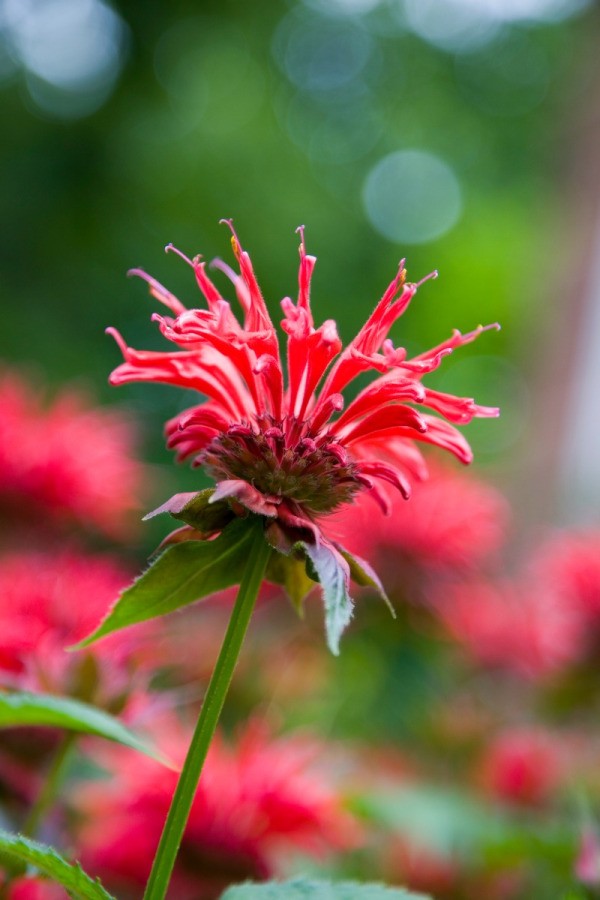

If you have spent some time researching Wild Bergamot, Bee Balm, or any other member of the Monarda genus on the internet, you may be feeling a bit confused. Nor is it the same as Wild Lavender, which is endemic to a different continent. About all these common names and scientific names….īut Wild Bergamot (Monarda fistulosa) IS NOT the same as Bee Balm (Monarda didyma)! They are related as they are in the same genus, but these are completely different species! Now, you can grow them side by side (I do!), but below is a table showing the differences between Wild Bergamot vs Bee Balm Differences between Wild Bergamot and Bee Balm Common Nameįew bees, certain butterfly species, Many humingbirdsĪnd Wild Bergamot is not the same as Bergamot Orange, which is a citrus fruit native to Italy. Map showing the range of Wild Bergamo ( Monarda fistulosa). The range of Monarda fistuolsa covers 45 of the 48 continental United States and 7 provinces of Canada. This is one of the most widely distributed native plants as you can see in the map below. Wild Bergamot is native to most of North America. It can grow in absolutely poor soil! Also, as it is drought tolerant, it is perfect for hot Summers in well drained areas. If you wish to find this plant in the wild, Wild Bergamot naturally grows in prairies, open meadows, open woods, and along roadsides.
#Mold on bee balm plant full size#
And it quickly establishes itself to full size in 2 years from seed.
:max_bytes(150000):strip_icc()/red-bee-balm-plants-2132327-08-b967bdbf732d4b43918706323570f9c2.jpg)
Wild Bergamot is good for attracting bees, butterflies, hummingbirds, and birds to your yard! This is truly one of the showier native plants you can grow. A member of the mint family, Wild Bergamot blooms for 1 month in Summer, and attracts many of bees, butterflies, and hummingbirds. Scientifically known as Monarda fistulosa, it will grow 2-4′ tall in full sun and well drained soil. Wild Bergamot is a perennial wildflower native to most of North America. What Wildlife, Pests, and Diseases effect Wild Bergamot.Keeping soil evenly moist while not splashing the leaves when watering will also help to prevent this problem.Looking to attract all the bees to your yard? Want to bring in some butterflies, hummingbirds, and hummingbird moths at the same time? Yeah? Look no further than Wild Bergamot! I’ve been growing this tough-as-nails wildflower for years and can teach you all you need to know! Wild Bergamot, Monarda Fistulosa Adding some well-rotted manure to alkaline soil can help to bring the pH level down a bit.įertilizer: Each spring, apply about 1/2-1" of compost.ĭiseases & Pests: Mildew and leaf spot can be prevented by proper thinning and allowing for good air circulation. Soil pH: Prefers acidic to neutral, but will grow in slightly alkaline soils. Watering Details: Keep moist, especially in full sun, but avoid overly saturated soils.

Divide every 2-3 years, or cut offshoots to replant. A member of the mint family, it spreads by runners and can hollow out in the center of an older planting. Deadhead flower heads that have faded to encourage a rebloom, or cut down after bloom. For the best show, plant into compost enriched soils and space well apart to discourage powdery mildew. It attracts hummingbirds, butterflies, and bees. Placement & CultivationBee balm is an essential perennial for sunny moist meadow plantings and informal borders.
#Mold on bee balm plant how to#
HOW TO GROW Monarda fistulosa When to Set Outside: At last frost date or in early autumn.


 0 kommentar(er)
0 kommentar(er)
